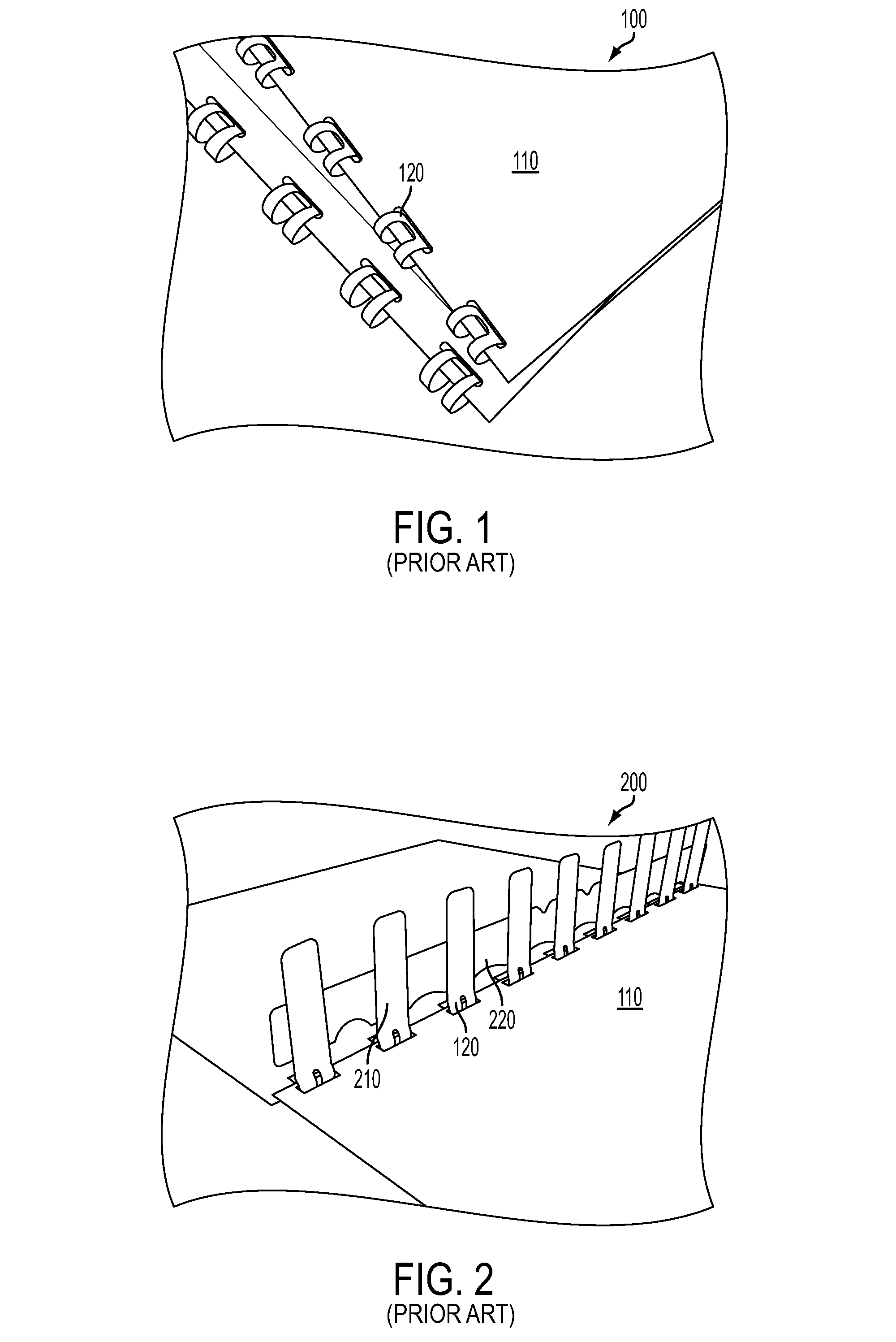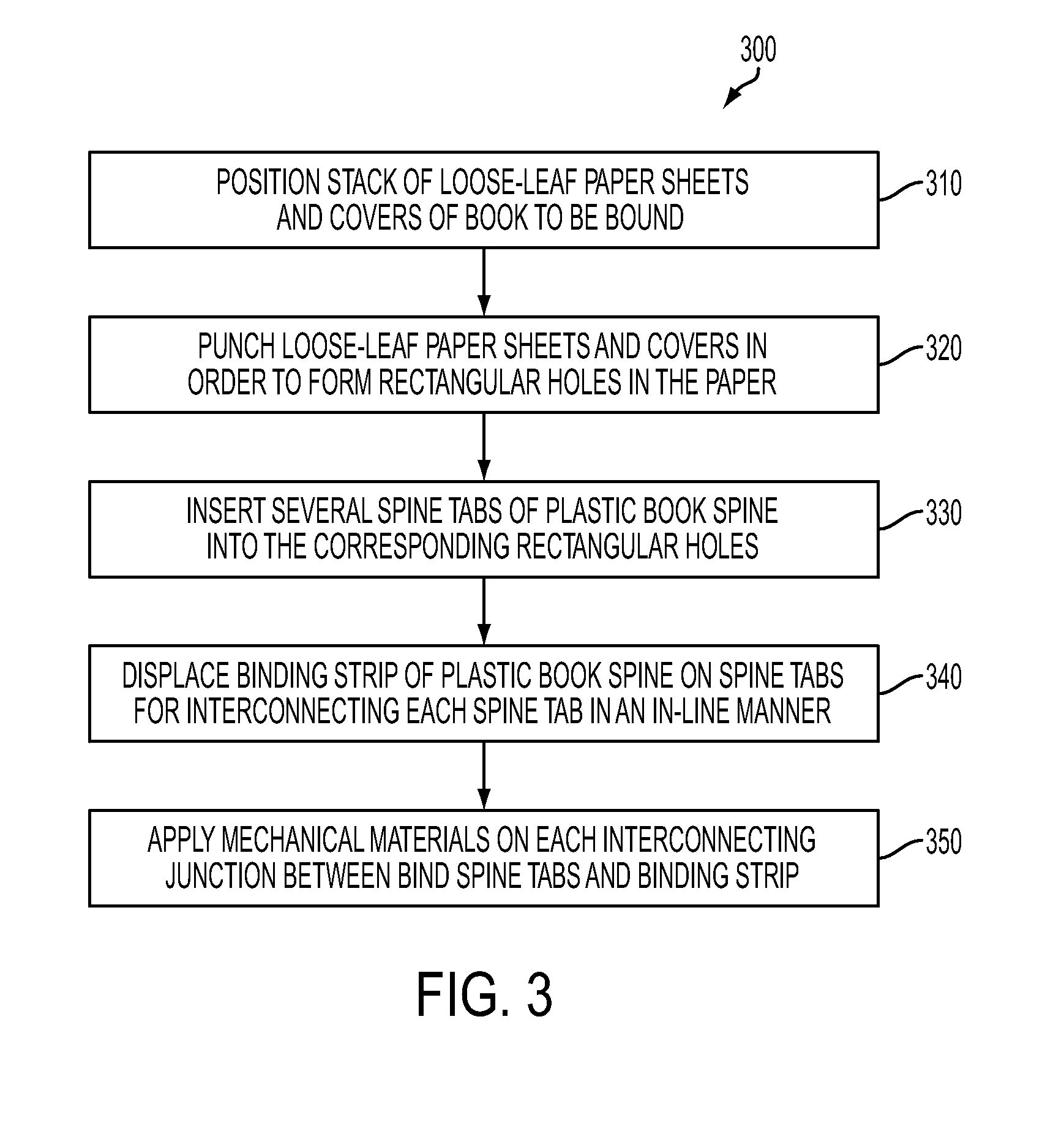Method and system for mechanically binding a book spine
- Summary
- Abstract
- Description
- Claims
- Application Information
AI Technical Summary
Benefits of technology
Problems solved by technology
Method used
Image
Examples
Embodiment Construction
[0023]The particular values and configurations discussed in these non-limiting examples can be varied and are cited merely to illustrate at least one embodiment and are not intended to limit the scope thereof.
[0024]FIG. 3 illustrates a high-level flow chart of a method 300 for permanently fastening an in-line plastic book spine 400, as depicted in FIG. 4, by means of a mechanical material fastening process, in accordance with a preferred embodiment. Note that the method 300 is depicted in FIG. 3. As illustrated at block 310, a stack of loose-leaf paper sheets 460 and covers 470, (i.e. front and back cover), of a book 440 to be bound can be positioned in an ordered manner. As described at block 320, the loose-leaf paper sheets 460 and the covers 470 can be punched by a suitable punching tool (not shown) in order to form rectangular holes 480 in the paper sheets 460 and the covers 470. As depicted thereafter at block 330, several spine tabs 410 of the plastic book spine 400 can be ins...
PUM
 Login to View More
Login to View More Abstract
Description
Claims
Application Information
 Login to View More
Login to View More - R&D
- Intellectual Property
- Life Sciences
- Materials
- Tech Scout
- Unparalleled Data Quality
- Higher Quality Content
- 60% Fewer Hallucinations
Browse by: Latest US Patents, China's latest patents, Technical Efficacy Thesaurus, Application Domain, Technology Topic, Popular Technical Reports.
© 2025 PatSnap. All rights reserved.Legal|Privacy policy|Modern Slavery Act Transparency Statement|Sitemap|About US| Contact US: help@patsnap.com



